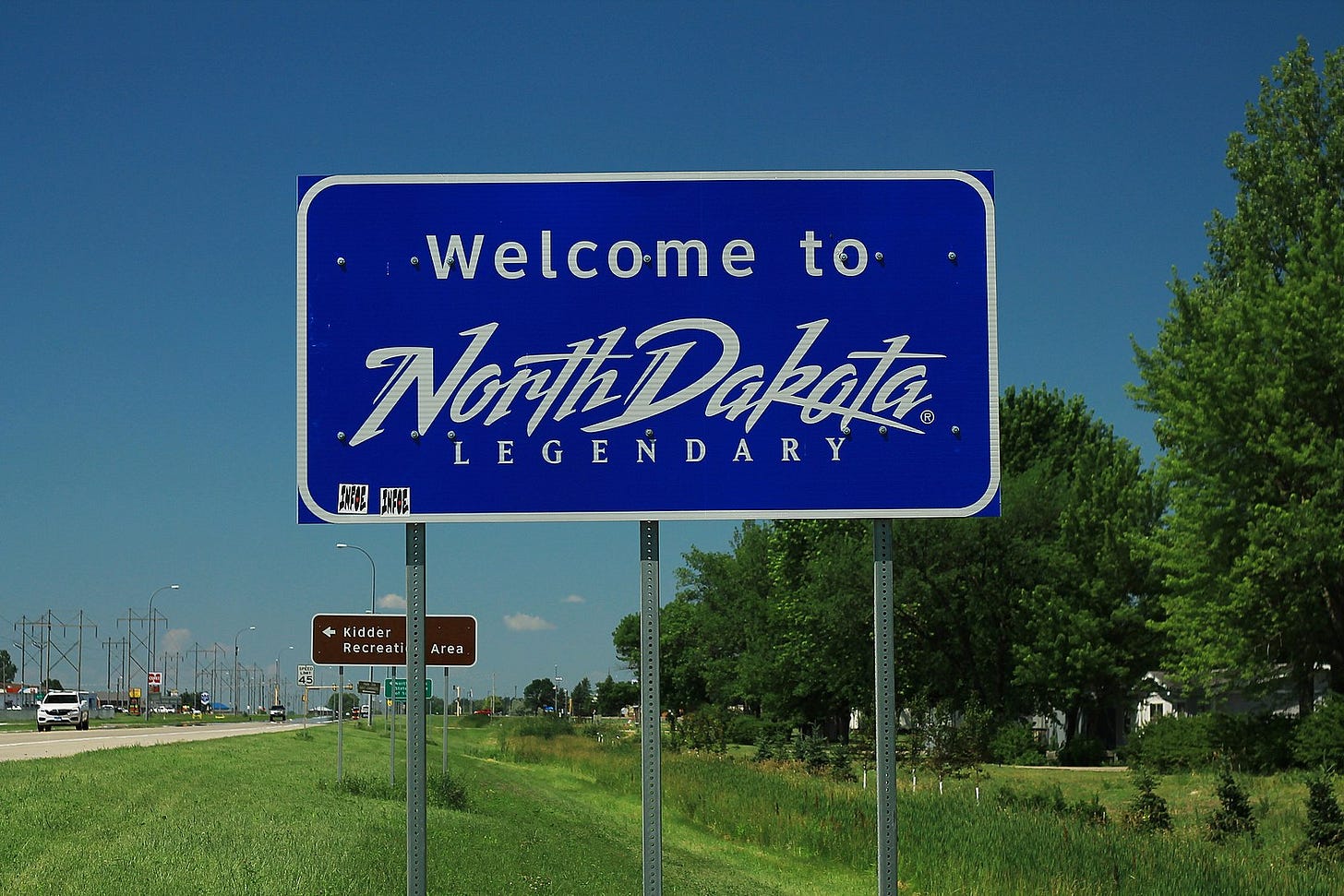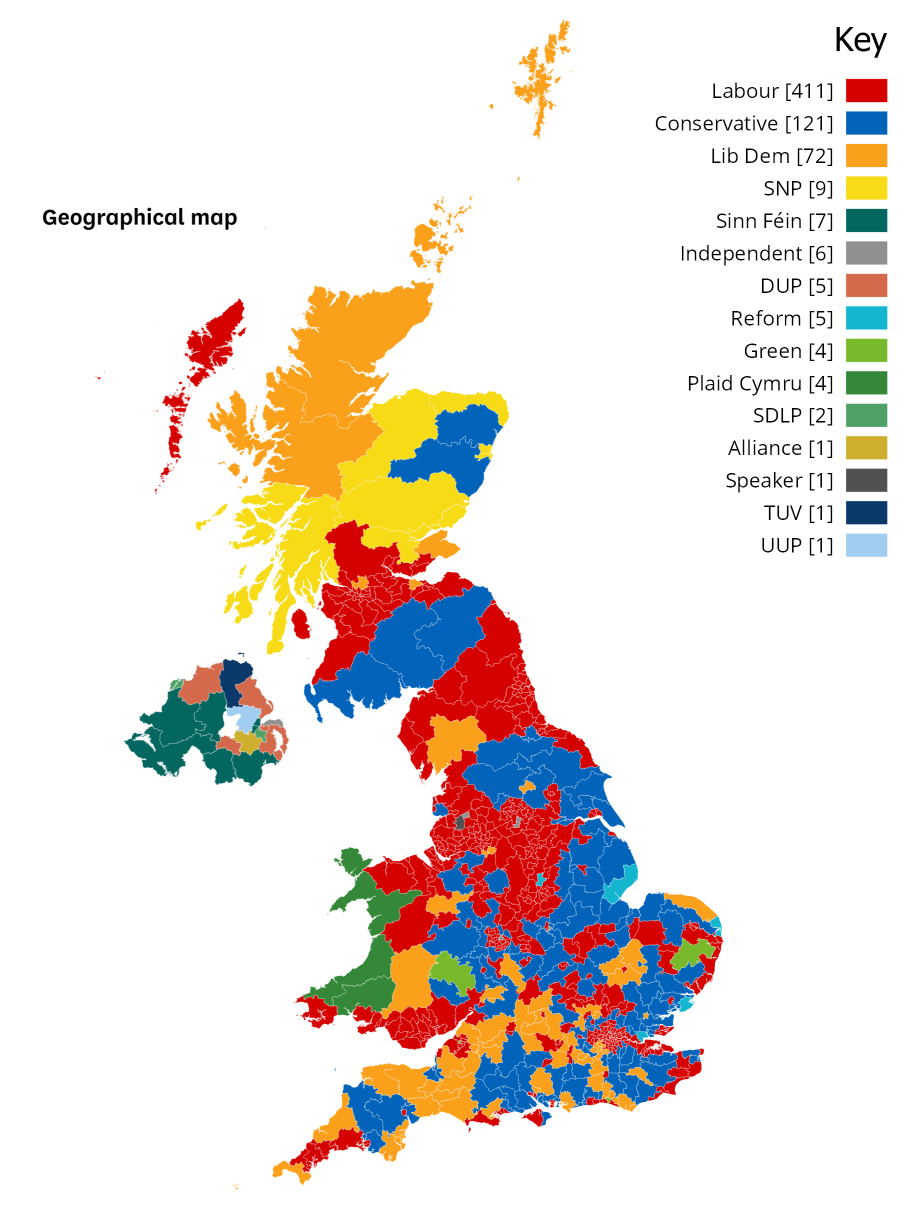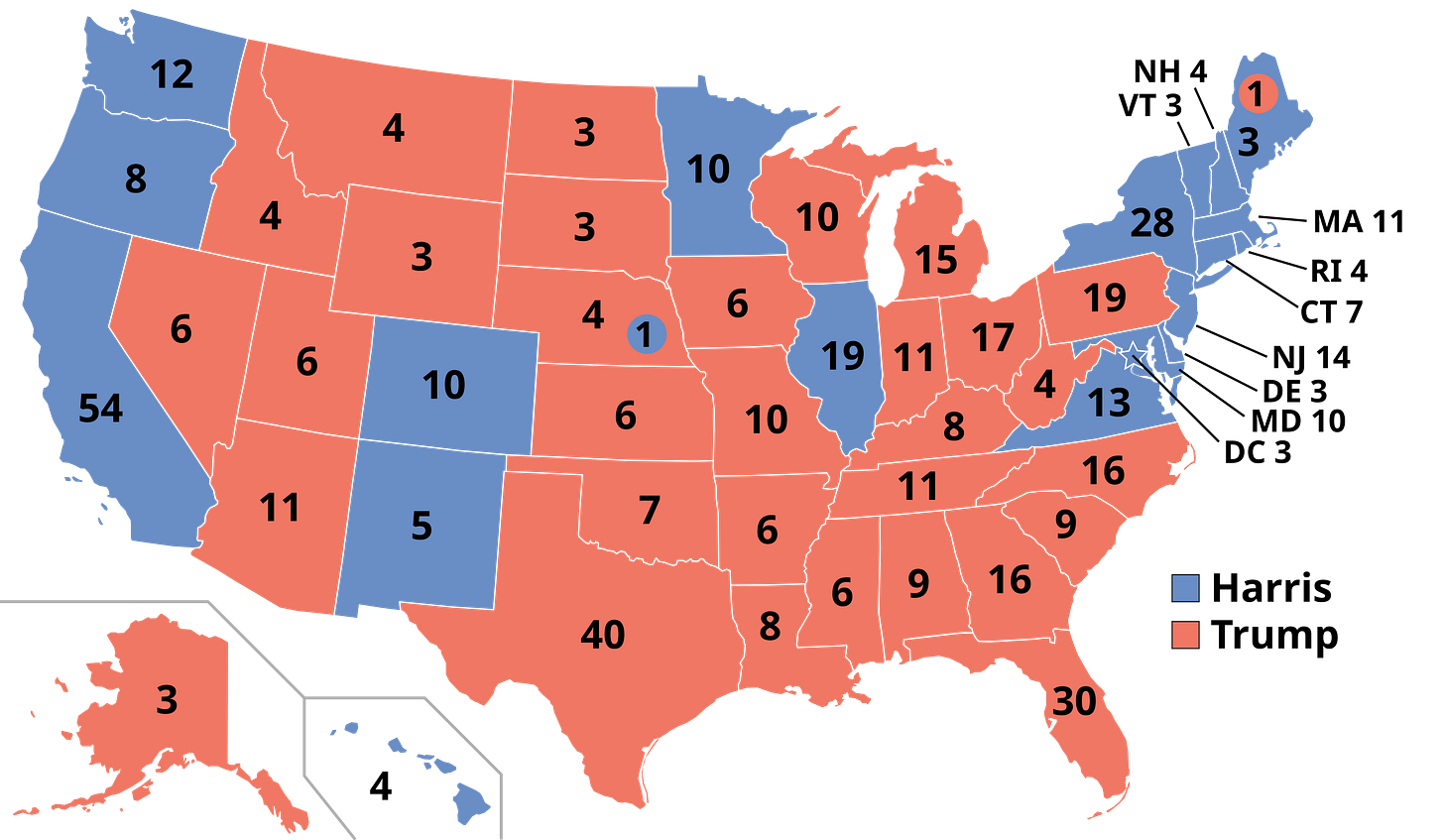One weird trick to save America
Move house
Choropleth maps are simply terrible for explaining election results. Take a look at the example below from the 2024 UK general election.
A cursory glance will tell you that Labour did well, but that the Conservatives still command vast swathes of England and the Scottish Borders. Of course, as we know, Keir Starmer’s party secured a landslide majority, while the Tories were reduced to a rump of 121 MPs. Hence the saying: “Land does not vote, people do.”
That is why these rather striking hex maps have come into fashion. Parliamentary constituencies are displayed as 650 equal-sized tiles, so that Ross, Skye and Lochaber’s 4,930 square miles looks identical to Islington North’s 2.85 (around 0.01 square miles of which is the Emirates Stadium. Yes, I spent 15 minutes doing the maths.)
This is all well and good, but there’s a problem. Take the institution which likes to call itself the “world's greatest deliberative body” — the United States Senate. Made up of 100 members, each state sends two senators who serve staggered six-year terms. Of course, that means that California’s 39 million residents enjoy as much representation as Wyoming’s 600,000. What else can you call that other than land voting?
We all know that Hillary Clinton won the popular vote in 2016, but Donald Trump secured the presidency by virtue of his victory in the electoral college. Yet the Senate map is, if anything, even more unequal. In 2020, when the chamber was split 50:50, Democrats represented almost 42 million more people, as states with larger, more urban populations tend to vote Democratic while smaller, more rural ones vote Republican. This is a potentially existential problem for both small and large ‘D’ democrats, not least because it is the Senate which confirms judicial nominees.
American history buffs will know that this setup was by design. Equal representation was a demand of smaller states, intent on preserving the equal vote they enjoyed under the Articles of Confederation while counterbalancing the House of Representatives. But the gap has grown. As of 1780, the largest state, Virginia, had around 12 times as many residents as the smallest one, Delaware. But California today has a staggering 65 times as many people as Wyoming.
A similar principle applies to the electoral college. Here, things get a little more proportional. California receives 54 votes to Wyoming’s three (the minimum allocation, being the sum of the state’s two senators and one representative.) But that is still not quite equal. Wyoming receives an electoral vote for every 195,000 residents, compared with California’s one for every 722,000.
This is not going to change any time soon. Indeed, the situation may grow even more unequal, as more Americans move to just eight states. Suggestions to fix this include splitting large Democratic states in two or three smaller ones. Or granting statehood to Washington, D.C. Or even more implausibly at this time of feverish polarisation, that the US Constitution be amended to change the distribution of senators. I have a solution that is much simpler: Democrats should move house, ideally from states such as California and New York to Wyoming, Alaska and North Dakota.
I concede, there are some logistical challenges to this approach. Moving house is expensive. People need jobs to go to, schools to send their children, caring responsibilities to manage. Moreover, while I have never experienced a North Dakotan winter, I have seen both the film and TV versions of Fargo and it does look rather chilly. But crucially, there is no constitutional bar to this plan. Indeed, Democrats in large states are already walking out the door. Unfortunately, it is to large Republican states.
In the next round of redistricting, it appears likely that solidly Democratic states such as New York and Illinois will lose electoral college votes, while Republican Texas and Florida will gain them. This trend is driven by people leaving urban areas in the North for places with lower living costs, housing in particular. But the electoral maths is just brutal for Democrats.
As Jerusalem Demsas noted in The Atlantic recently, if current trends continue, the 2032 Democratic nominee could carry all the states that Kamala Harris won last year plus Pennsylvania, Michigan and Wisconsin (three states which she lost but came closest to winning) and still not secure the presidency.
If Democrats don’t want land to keep voting Republican, they need to vote with their feet. Specifically, to small states where they can actually swing elections. I’ll grab my coat. Who’s with me?








There is a simpler solution while maintaining the 100 Senators (2 per State). They amend the Constitution to award one vote to each Senator for every 5 million voters in the State they represent. Thus the two Senators for Wyoming would get half a vote each and the Senators from California would get eight vote between them. Democracy is restored. Currently the system is worse than the Rotten Borough’s system in the UK prior to the Great Reform Act of 1832.